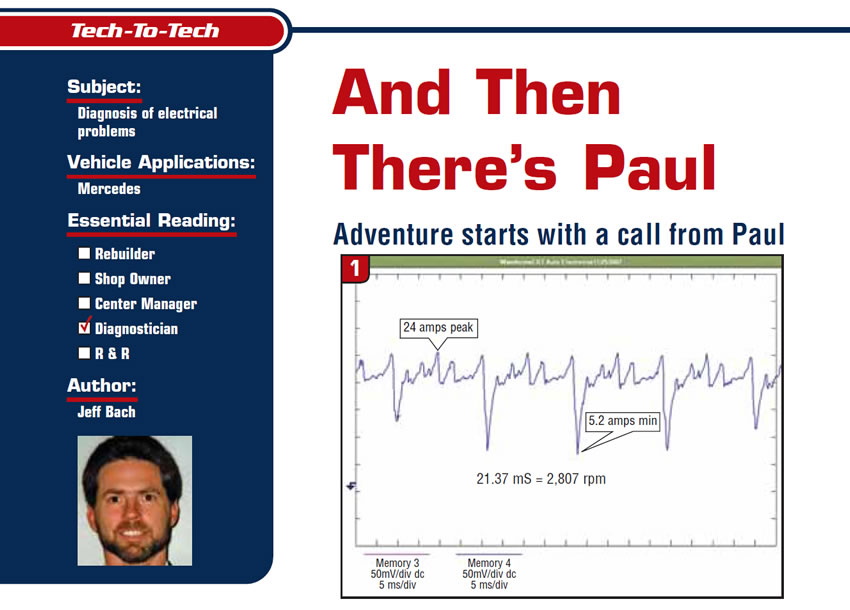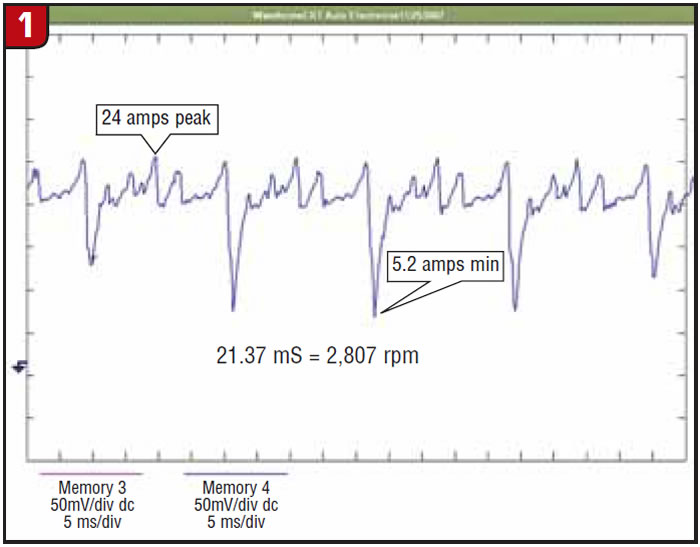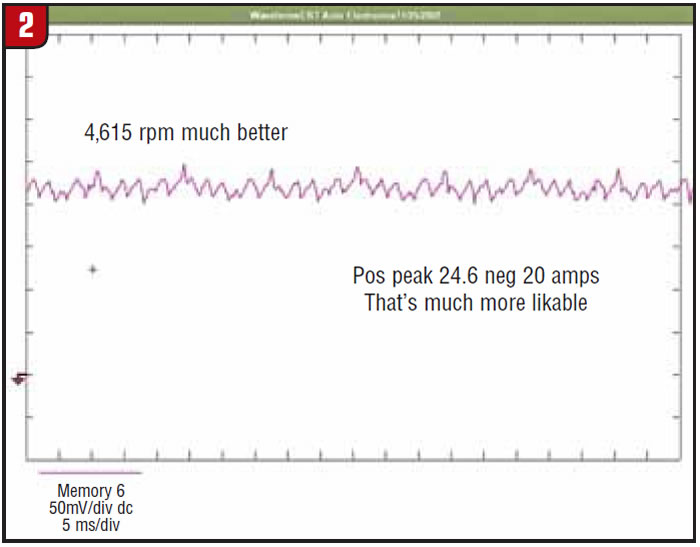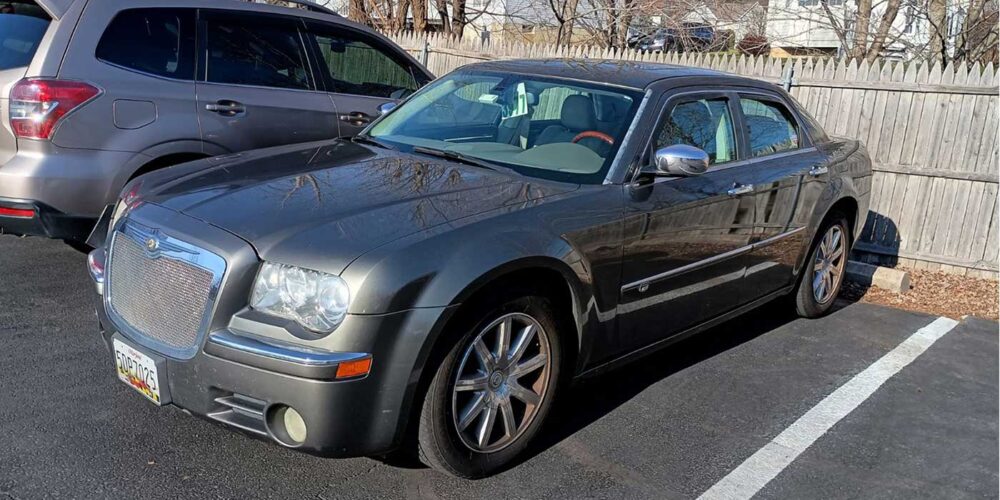
Tech to Tech
- Subject: Diagnosis of electrical problems
- Vehicle Application: Mercedes
- Essential Reading: Diagnostician
- Author: Jeff Bach
Adventure starts with a call from Paul
Some people you meet are just normal, everyday people doing their thing and living life. Their car comes in for maintenance or repair, you fix it and collect their money, and they go home. My friend Paul calls and says he needs a couple of little things fixed on his Mercedes and asks if I have a car I can loan him. “Sure,” I say – and the adventure begins.
He was off work that day because it was Veteran’s Day or Monday or maybe both. Paul is a contractor who specializes in custom remodeling and cabinetry. He pretty much works when he wants to because, well, he’s two years backed up on work and does what he wants when he wants and nobody rushes him (yeah, he’s that good). He doesn’t advertise, because they’ve beaten a path to his door.
Paul is the kind of guy who gets you to tell people stories and then adds embellishments while you’re telling the story, and before you know it you’re having as much fun telling the story as you did living the experience – maybe more. Sometimes he reminds you of stuff you did (that never happened) and gets you to remember it.
Paul’s list of problems with his car consists of some of the definitions that technicians (especially flat-rate techs) love to hate. Things like “The heat doesn’t always come out right” and “Sometimes the transmission doesn’t want to go like it should” or “The dash doesn’t light all the way up, and the radio needs a new speaker in the back right.”
“So, how do you know it needs a new speaker?” I ask him, thinking he must have done some checking on his own to know that it’s not the driver in the radio or the wiring that might be the problem. It’s always good to know what level of expertise customers have when trusting their diagnosis before I get stuck ordering what they ask for. I figure this would be a good time to get some details about the heater issue so I ask, “Does the heat not get hot or does it not blow out the proper vent or what when it’s not working?”
“Well, I don’t know which vent it wants to blow out or whether it’s hot or cold when it’s not working because it’s not working,” he replies. “I can tell you this – if I sit on the back of the seat with my head out the sunroof and drive with my left foot it works OK, but only if the cruise is on. Does that help?”
“Yeah, Paul, that cuts my diagnostic bill in half,” I say dryly. “I can see from your diagnostic methods that you’re a heck of a carpenter.”
“Well, thank you. I try,” he replies smartly.

I put my guy on the heat problem first with the best description I can think of and let him work on it. After a while, my guy has Paul’s problem traced to a bad blower module and wants to know if he should order the $485 control module for the blower that he thinks is the problem. I tell him to hold up until I can get a chance to view the blower motor on the scope with the current probe. I know from my Cadillac experience that a bad module can many times be caused by a blower that has a hard time making steady current because of bad brush contact with the armature. Power transistors don’t care much for surges, which result from this bad brush-to-armature connection. The good news is that they’re easy to spot on a lab scope using my CRT probe. Figure 1 shows the first image I received from the scope while it was hooked to Paul’s blower.

I know from this picture that the likelihood of getting by on just a blower module is about as good as getting to pay for my own dinner when Paul is around. After pulling the motor apart and dressing the blower armature and brushes, I took the shot seen in Figure 2.

From this picture, I can confidently say the blower is now not a danger to the module. It’s also as easy for me to explain to Paul as it is for Bert to explain “near and far” to Ernie.

Jeff Bach is the owner of CRT Auto Electronics, an ASA-member shop in Batavia, Ohio. For more information on this topic, contact Bach at 515-732-3965. His e-mail address is [email protected], or visit his Web site, www.currentprobe.com.













